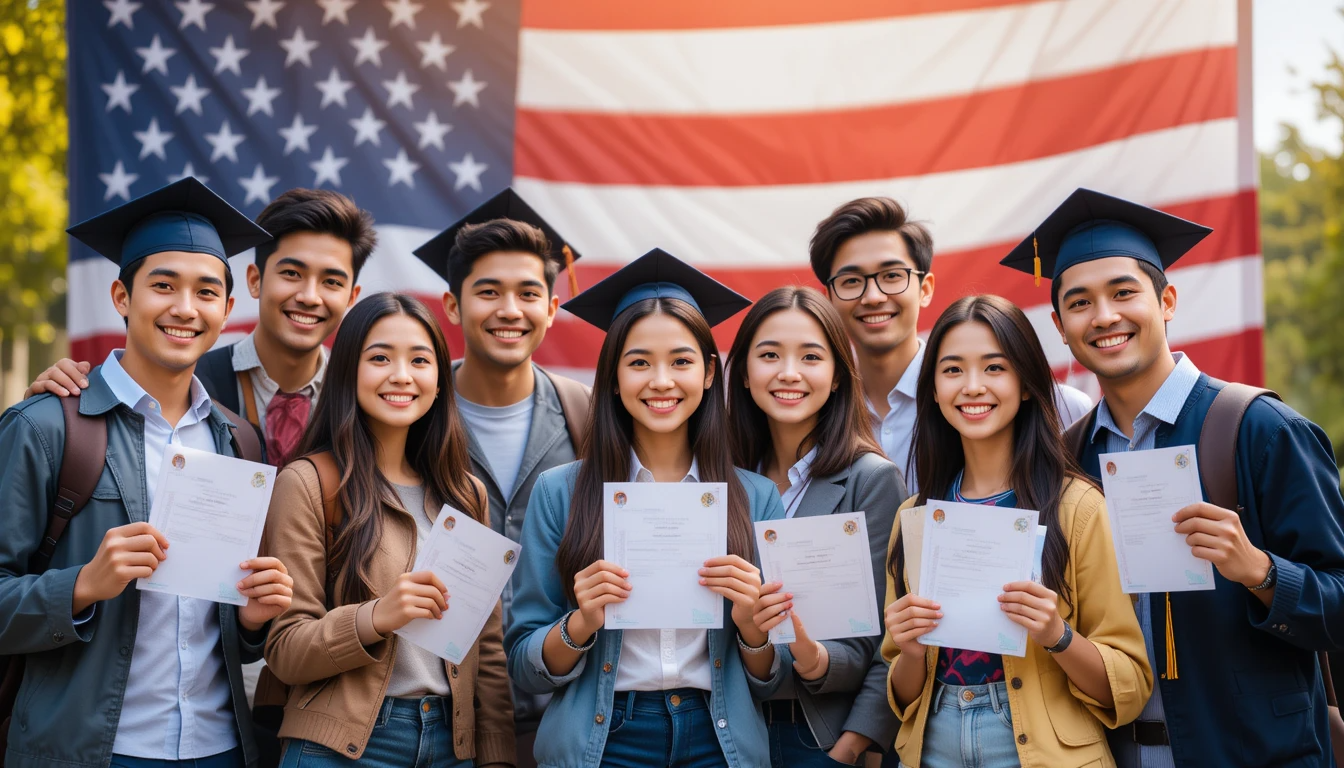Study in USA for Immigrants With Visa Sponsorship – Admissions in USA

Studying in the USA as an immigrant is an exciting opportunity, but navigating visa sponsorship is a crucial step in making this dream a reality. From understanding visa types to choosing the right institution, the process requires careful planning. This guide will help you grasp the essentials of visa sponsorship and how to successfully secure admission to a U.S. university.
Understanding Visa Sponsorship
Visa sponsorship is a key requirement for immigrants seeking to study in the U.S. A sponsor, typically an accredited educational institution, provides necessary documentation to support your visa application. The institution issues a Form I-20 (for F-1 visas) or a Form DS-2019 (for J-1 visas), confirming your enrollment and financial eligibility.
A sponsor ensures that you meet the financial and academic qualifications required by U.S. immigration laws. Some institutions offer financial aid or scholarships, easing the burden of expenses. Therefore, researching schools that actively support international students can make a significant difference in your application success.
Types of Student Visas
There are different types of visas available for international students, each serving specific educational purposes:
- F-1 Visa: The most common visa for academic programs at accredited universities, colleges, and language schools.
- M-1 Visa: Designed for vocational and technical training programs.
- J-1 Visa: Issued to exchange visitors, including students in cultural and educational exchange programs.
- B-2 Visa: Occasionally used for short-term study, but it does not allow enrollment in degree-granting programs.
Choosing the right visa type depends on the program you intend to pursue. Ensuring you apply under the correct category helps prevent unnecessary complications.
Admission Requirements for International Students
Once you have identified the appropriate visa type, the next step is preparing your application. Admission requirements vary by institution but generally include the following:
- Academic Transcripts: Verified records from previous educational institutions, often translated into English.
- Standardized Test Scores: Depending on the program, you may need TOEFL, IELTS, SAT, GRE, or GMAT scores.
- Personal Statement: A well-written essay explaining your educational goals and why you chose the specific institution.
- Letters of Recommendation: Endorsements from teachers or employers highlighting your academic and professional abilities.
- Financial Proof: Bank statements or affidavits showing that you can cover tuition and living expenses.
Meeting these requirements ensures a strong application and increases your chances of acceptance.
Finding Universities That Offer Visa Sponsorship
Not all universities actively sponsor international students, so researching institutions that provide visa support is crucial. Here are some effective ways to find the right schools:
- Check SEVIS-Approved Schools: The Student and Exchange Visitor Information System (SEVIS) lists accredited institutions authorized to issue Form I-20.
- Review University Websites: Many universities highlight their international student programs and sponsorship policies online.
- Connect with Current International Students: Social media groups and student forums can provide firsthand insights into visa sponsorship experiences.
- Contact Admissions Offices: Speaking directly with university representatives can clarify sponsorship opportunities and financial aid options.
Step-by-Step Application Process
Breaking the application process into clear steps can make it more manageable:
- Research Schools: Identify institutions that match your academic and financial needs.
- Prepare Documents: Gather transcripts, test scores, personal statements, and financial proof.
- Submit Applications: Apply online through university portals and pay any required fees.
- Attend Interviews: Some universities conduct interviews to assess language proficiency and academic goals.
- Receive Form I-20 or DS-2019: Once accepted, your institution will provide the necessary visa sponsorship documents.
- Apply for a Student Visa: Schedule a visa interview at your nearest U.S. embassy or consulate.
- Plan for Arrival: Arrange housing, transportation, and orientation sessions at your chosen university.
Tips for a Successful Application
- Start Early: Many universities have strict deadlines, so begin the process well in advance.
- Ensure Accuracy: Double-check all forms and documents to avoid mistakes that could delay your application.
- Prepare for the Interview: Be ready to answer questions about your academic goals and financial stability.
- Seek Financial Aid: Look for scholarships and grants that support international students.
- Stay Organized: Keep track of deadlines, required documents, and communication with universities.
Conclusion
Pursuing higher education in the USA as an immigrant is an achievable goal with the right preparation and guidance. By understanding visa sponsorship, selecting the right visa type, and applying to supportive universities, you can confidently take steps toward studying in the U.S. With determination and proper planning, your academic journey abroad can become a reality, opening doors to new opportunities and lifelong learning experiences.